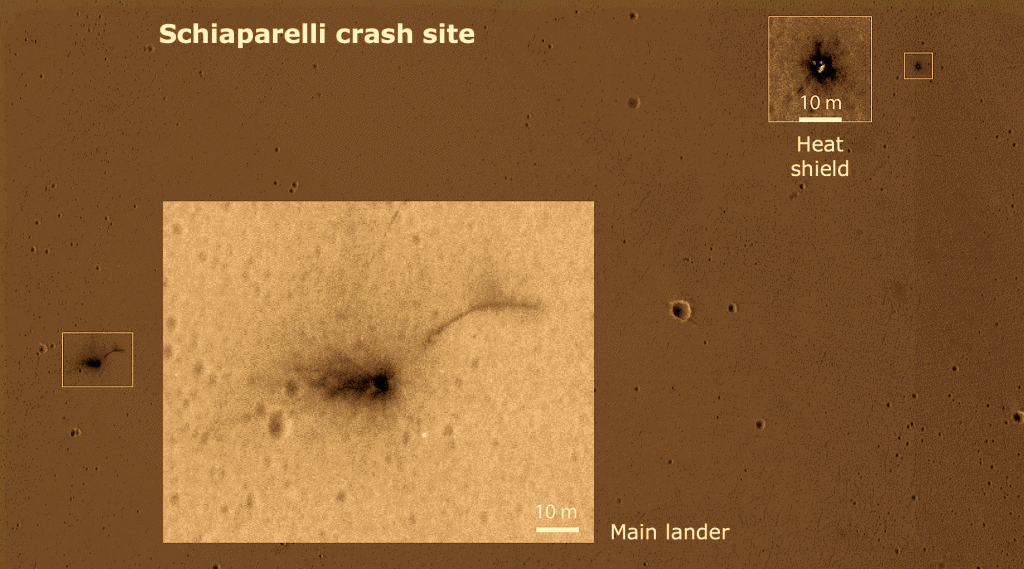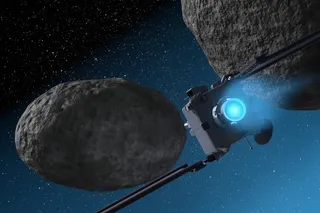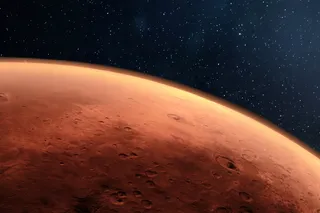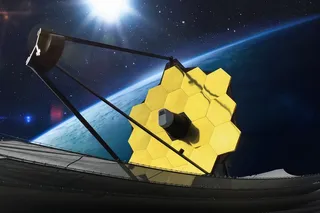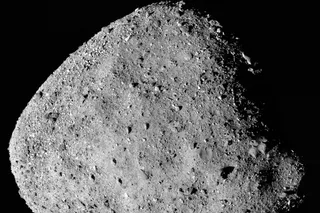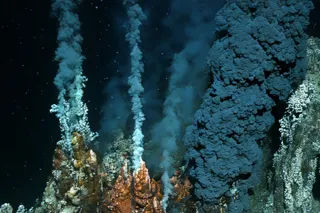The Schiaparelli crash site was observed on November 1 by NASA's Mars Reconnaissance Orbiter (MRO). The long arc might have been caused by an explosion of hydrazine propellant. (Credit: NASA/JPL-Caltech/UAz) It will be a long time until humans put boots on Mars--at least until the 2030s and possibly a lot longer, depending on what the incoming Trump administration thinks about NASA's unfunded exploration plans. But through our robotic emissaries, we have already made quite a mark on the planet. The newest one, on October 19, was the sad and unexpected splat from the European Space Agency's Schiaparelli probe. Apparently, betrayed by an errant altitude reading from one of its instruments, the lander crashed into the surface at about 300 kilometers per hour and gouged out 2.4-meter-wide (8-foot) crater surrounded by a debris trail, probably from a fuel explosion. This was hardly the first time that an attempted Mars touchdown ended the wrong way. Russia's Mars 3 and Mars 6 landers made it to the surface but failed immediately (a shame, they were very cool designs). NASA's Mars Polar Lander had a catastrophic crash that prompted an overhaul of the agency's whole Mars program. The British Beagle 2 probe never phoned home after reaching the surface. They all still sit there on Mars, gathering dust and slowly fading away, along with a whole other set of probes that survived the journey.

Opportunity rover's tracks, seen from orbit by MRO, gradually fade away as they are covered by windblown dust. The light lines represent about one year's worth of travel during 2006-2007. (Credit: NASA/JPL/UAz) Two of those survivors, the Opportunity and Curiosity rovers, are still at it, throwing down treadmarks as they roll across the rusty terrain. Opportunity is currently 13 years into its 3-month mission, a bold exception to the rule that machines usually break right after their warranties expire. The much larger and more capable Curiosity is wending its way through the rugged terrain around Mt Sharp. As it moves, it rolls out a secret message: The tread marks from Curiosity's wheels spell out J-P-L over and over. (JPL stands for the Jet Propulsion Lab, where the rover was created. Sneaky.)
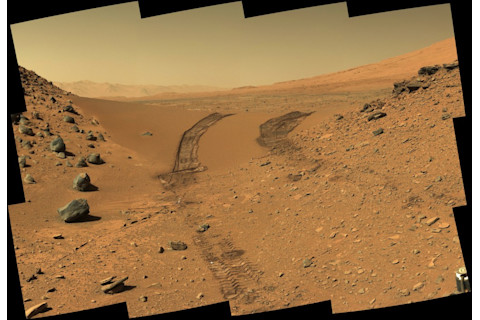
Curiosity rover's tracks on Mars spell out J-P-L in Morse code--a little prank on the part of the engineers. (Credit: NASA/JPL-Caltech/MSSS) What makes all of these robotic imprints on Mars doubly impressive is that we can also see them from space. Most of the Mars landers, even the failed ones, have been imaged by Mars orbiters, most notably the eagle-eyed Mars Reconnaissance Orbiter. Rapid surveillance shots from MRO identified the Schiaparelli crash site and helped decode what had gone wrong. Schiaparelli itself traveled with a companion, the ExoMars Trace Gas Orbiter, which arrived flawlessly and has begun returning impressive-looking first results.
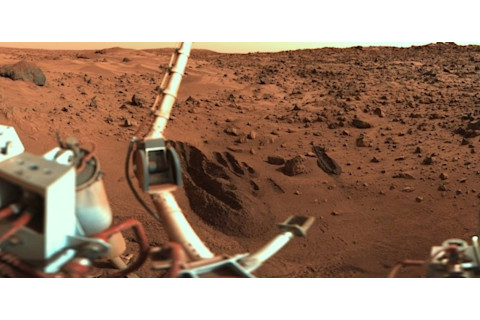
Viking 1 lander scooped up Mars soil in 1976, looking for microbial life. The ambiguously negative results have fueled 40 years of controversy. (Credit: NASA/NSSDC) Even the Schiaparelli lander was not a total loss. Data sent back on the way down will refine the design and trajectory of the ESA's first Mars rover, set for 2020 launch. Beneath the gathering dust are other milestones in the history of Earthlings on Mars, including the spots where the two Viking landers dug into the ruddy soil in search of alien life.

Viking 1 and Viking 2 landers, which both arrived in 1976, were spotted from orbit by MRO. Their landing parachutes were still visible 30 years later, suggesting that the trenches they dug are probably still visible through the dust, too. (Credit: NASA/JPL/UAz) Someday, I expect, human explorers will visit our robots, just as the fictional Mark Watney did in the movie The Martian. In the meantime, the human footprint on Mars keeps expanding. Just sometimes, it expands a lot more quickly than we intended. For space and astronomy news as it happens, follow me on Twitter: @coreyspowell
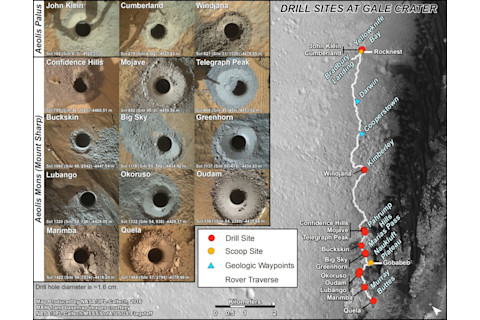
Drill-holes on Mars will remain visible long after tread marks are gone. The Curiosity rover carved into these rocks as it traveled, revealing diverse composition on Mars. (Credit: NASA/JPL-Caltech/MSSS/UA)
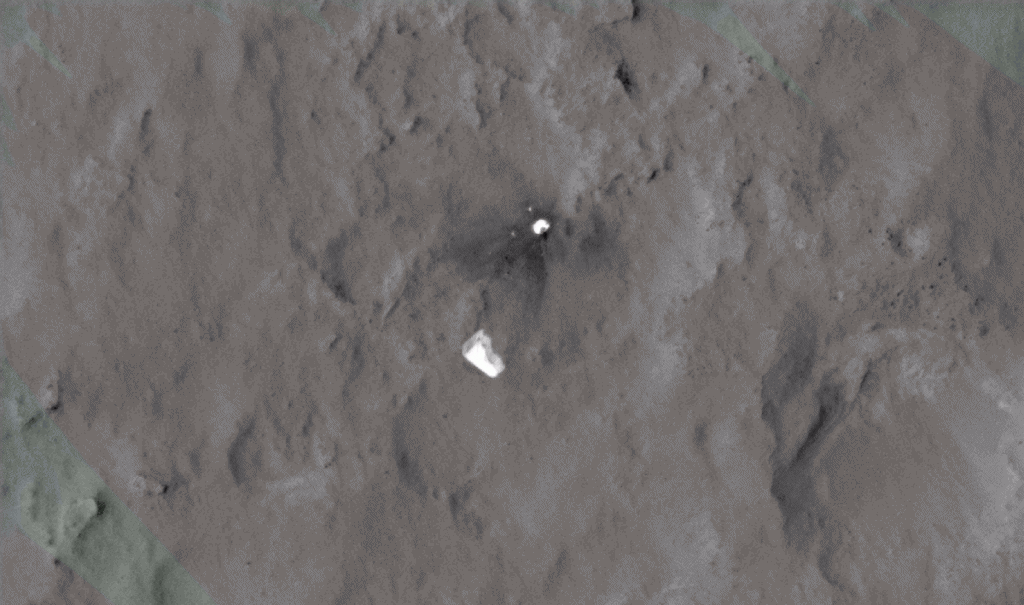
Curiosity's parachute is flapping in the Martian breeze in this 2012 image from MRO. Shortly after, Curiosity drove away from its landing site. (Credit: NASA/JPL/UAz)


